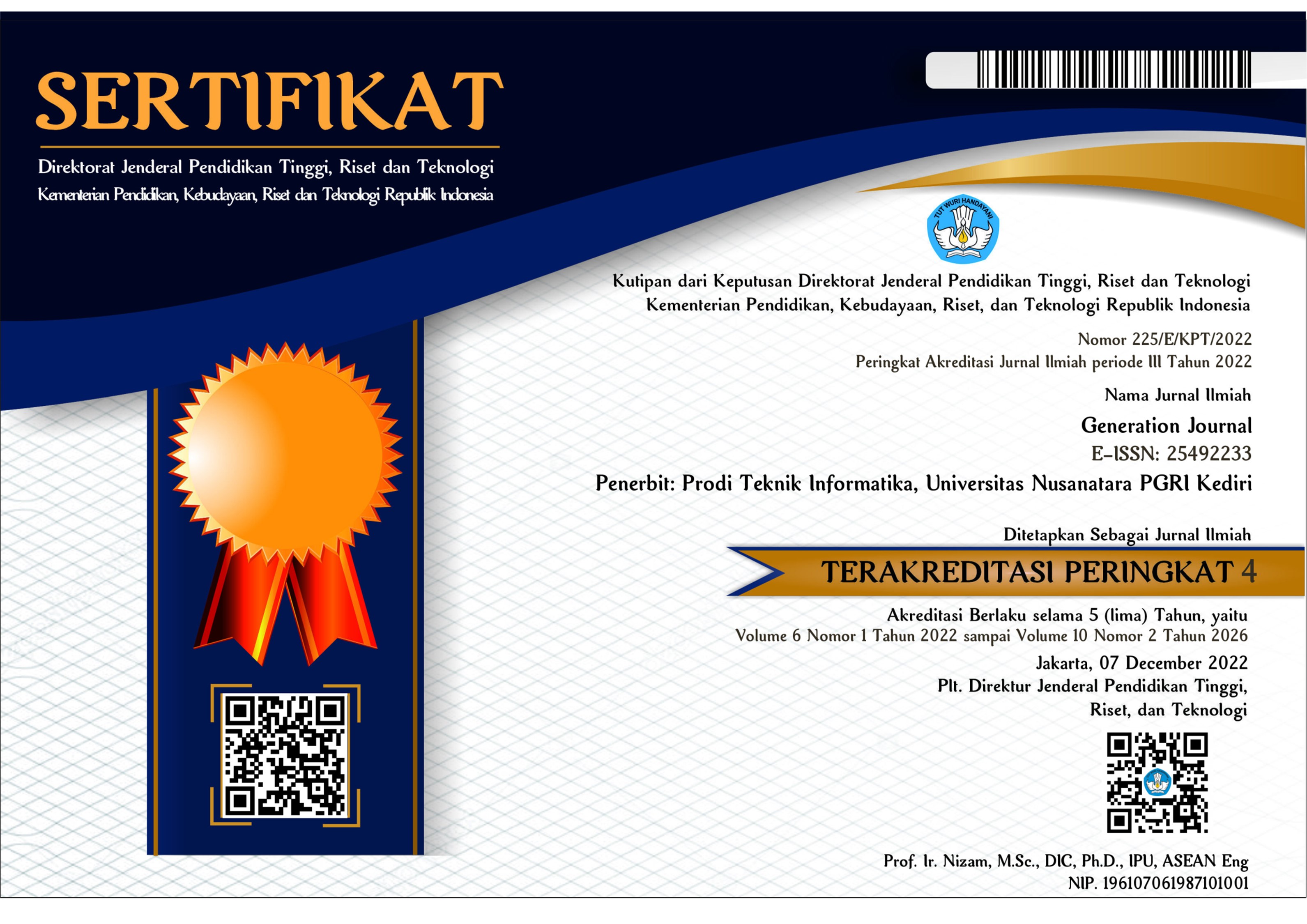Sistem Cerdas Penilaian Ujian Essay Menggunakan Metode Cosine Similarity
DOI:
https://doi.org/10.29407/gj.v7i1.18318Keywords:
intellligent system, essay exam, online exam, cosine similarityAbstract
Technological developments have grown rapidly without exception in the world of education. The development of technology in the field of education can be seen by the number of information systems used for the learning process. The online learning process has many obstacles, especially when the exam is being conducted. Not all educators can conduct online exams by utilizing information technology. One of the most difficult exams is the essay exam. The essay exam that was conducted experienced many obstacles in terms of correcting and assigning grades to students. By utilizing intelligent information technology, this can be solved because everything can be done by the system automatically. This study aims to build an intelligent system for assessing essay exams using the cosine similarity method. In the system built, all the exam processes can be done automatically. The system can correct the answers written by students then the system will also automatically give a value according to the answers entered. The results of the study indicate that the system built can assist teachers in conducting online essay exams effectively and efficiently. This is because the system can correct students' answers by automatically matching the answers from the teacher.
References
Ahmad, R., Wardi, W., & Dewiani, D. (2018). E-learning automated essay scoring system menggunakan metode searching text similarity matching text. Jurnal Penelitian Enjiniring, 22(1), 38-43.
Amalia, E. L., Jumadi, A. J., Mashudi, I. A., & Wibowo, D. W. (2021). Analisis Metode Cosine Similarity Pada Aplikasi Ujian Online Otomatis (Studi Kasus JTI POLINEMA). Jurnal Teknologi Informasi dan Ilmu Komputer, 8(2), 343-348.
Ariantini, D. A. R., Lumenta, A. S., & Jacobus, A. (2016). Pengukuran Kemiripan Dokumen Teks Bahasa Indonesia Menggunakan Metode Cosine Similarity. Jurnal Teknik Informatika, 9(1).
Fitri, R., & Asyikin, A. N. (2015). Aplikasi penilaian ujian essay otomatis menggunakan metode cosine similarity. Poros Teknik, 7(2), 88-94.
Hamza, S., Sarosa, M., & Santoso, P. B. (2014). Sistem Koreksi Soal Essay Otomatis Dengan Menggunakan Metode Rabin Karp. Jurnal EECCIS, 7(2), 153-158.
Hardiyanto, E., & Rahutomo, F. (2016, October). Studi Awal Klasifikasi Artikel Wikipedia Bahasa Indonesia Dengan Menggunakan Metoda K Nearest Neighbor. In Prosiding Sentrinov (Seminar Nasional Terapan Riset Inovatif) (Vol. 2, No. 1, pp. 158-165).
Rahmat A., Wardi, & Dewiani (2018). E-learning Automated Essay Scoring System Menggunakan Metode Searching Text Similarity Matching Text, 38-43
Rahmat A., Riz Rifai O. S. (2020), Sistem Penilaian Esai Otomatis Menggunakan Algoritma Stemming Nazief dan Adriani, 101-108
Sulistyo, M. E., Saptono, R., & Assidiq, A. (2015). Penilaian Ujian Bertipe Essay Menggunakan Metode Text Similarity. Telematika: Jurnal Informatika dan Teknologi Informasi, 12(2), 146-158..
Susandi, D., & Sholahudin, U. (2016). Pemanfaatan Vector Space Model pada Penerapan Algoritma Nazief Adriani, KNN dan Fungsi Similarity Cosine untuk Pembobotan IDF dan WIDF pada Prototipe Sistem Klasifikasi Teks Bahasa Indonesia. ProTekInfo (Pengembangan Riset dan Observasi Teknik Informatika), 3, 22-29.
Wibowo, R. A., Nugroho, D., & Widada, B. (2017). Penggunaan Metode Cosine Similarity Pada Sistem Pengelompokan Kerja Praktek, Tugas Akhir dan Skripsi. Jurnal Teknologi Informasi dan Komunikasi (TIKoSyN), 5(1).
Wahid, D. H., & Azhari, S. N. (2016). Peringkasan sentimen ekstraktif di twitter menggunakan hybrid TF-IDF dan cosine similarity. IJCCS (Indonesian Journal of Computing and Cybernetics Systems), 10(2), 207-218.
Winarsono, D., Siahaan, D. O., & Yuhana, U. (2009). Sistem penilaian otomatis kemiripan kalimat menggunakan syntactic-semantic similarity pada sistem e-learning. Jurnal Ilmiah Kursor, 5(2).
Downloads
Published
Issue
Section
License
Authors who publish with this journal agree to the following terms:
- Copyright on any article is retained by the author(s).
- The author grants the journal, the right of first publication with the work simultaneously licensed under a Creative Commons Attribution License that allows others to share the work with an acknowledgment of the work’s authorship and initial publication in this journal.
- Authors are able to enter into separate, additional contractual arrangements for the non-exclusive distribution of the journal’s published version of the work (e.g., post it to an institutional repository or publish it in a book), with an acknowledgment of its initial publication in this journal.
- Authors are permitted and encouraged to post their work online (e.g., in institutional repositories or on their website) prior to and during the submission process, as it can lead to productive exchanges, as well as earlier and greater citation of published work.
- The article and any associated published material is distributed under the Creative Commons Attribution-ShareAlike 4.0 International License














